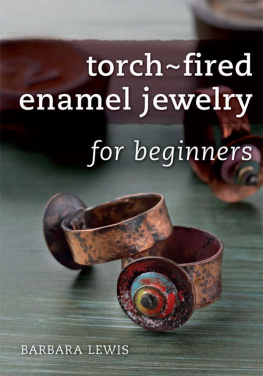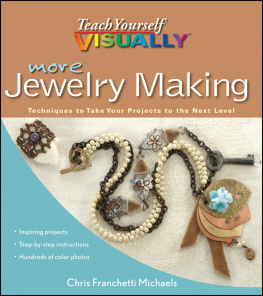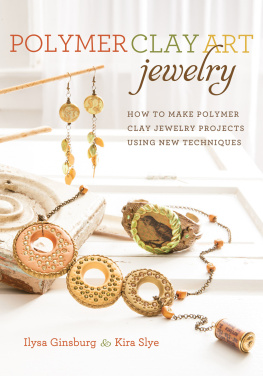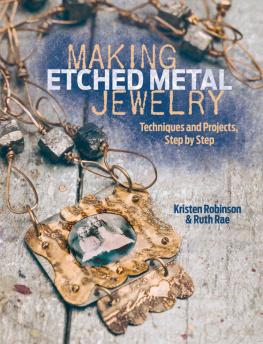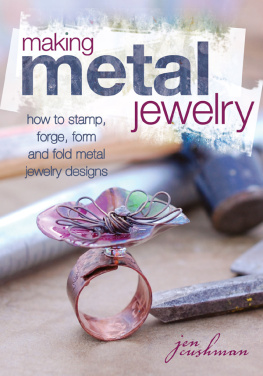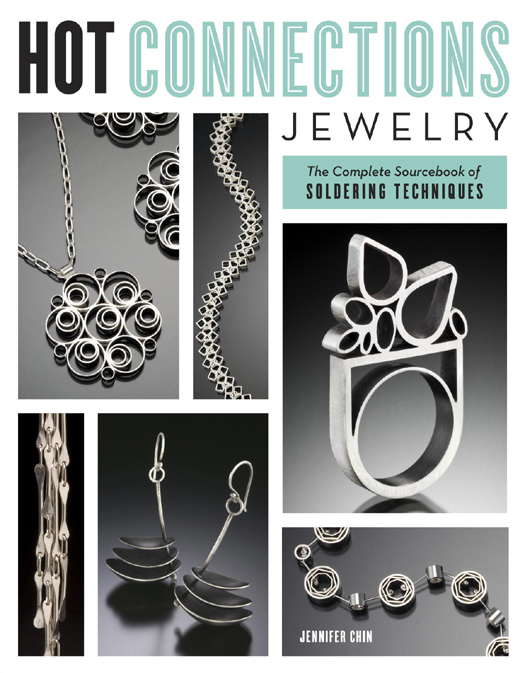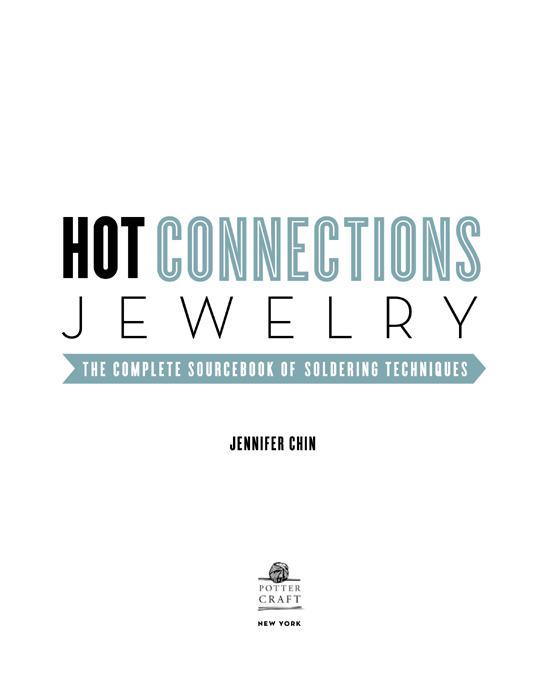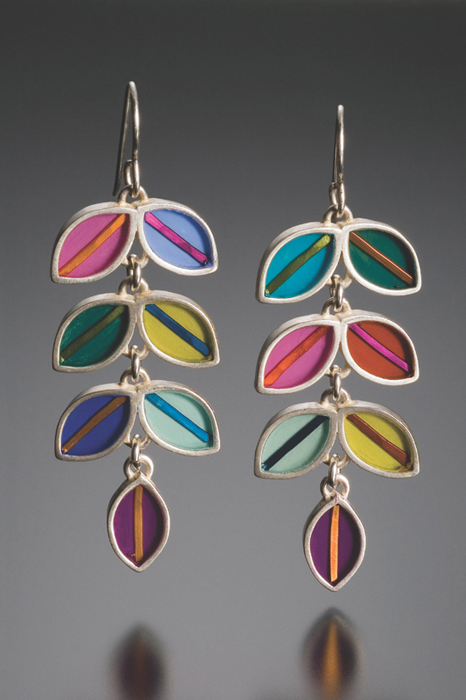
EARRINGS BY TAMI RODRIG, sterling silver, paint, and resin. PHOTO BY ROBERT DIAMANTE
cover artists/photographers: front (clockwise from top center): Jennifer Chin/Allen Bryan, Hilary Hachey/Hap Sakwa, Jennifer Chin/Allen Bryan, Lisa Crowder/Hap Sakwa, Donna Veverka/James Hall, Jennifer Chin/Allen Bryan. back: Jennifer Chin/Allen Bryan
by Tami Rodrig. Sterling silver, paint, and resin. Photo by Robert Diamante
by Donna DAquino. Sterling silver. Photo by Ralph Gabriner
by Hilary Hachey. Sterling silver. Photo by Hap Sakwa
by Donna DAquino. Sterling silver and 18K gold. Photo by Ralph Gabriner
by Jennifer Chin. Sterling silver. Photo by Allen Bryan
by Donna DAquino. Sterling silver. Photo by Robert Gabriner
by Jennifer Chin. Sterling silver. Photo by Allen Bryan
by Lauren Schlossberg. Sterling silver and glass beads. Photo by Hap Sakwa
by Jennifer Chin. Sterling silver. Photo by Allen Bryan
Copyright 2011 by Jennifer Chin
All rights reserved.
Published in the United States by Potter Craft, an imprint of the Crown Publishing Group, a division of Random House, Inc., New York.
www.crownpublishing.com
www.pottercraft.com
POTTER CRAFT and colophon is a registered trademark of Random House, Inc.
Library of Congress Cataloging-in-Publication Data
Chin, Jennifer.
Hot connections jewelry : the complete sourcebook of soldering techniques / Jennifer Chin. 1st ed.
p. cm.
Includes index.
eISBN: 978-0-8230-8228-5
1. Jewelry making. 2. Solder and soldering. I. Title.
TT212.C495 2011
739.27--dc22
2010038622
ILLUSTRATIONS by Cathy Chin
LESSON AND PROJECT PHOTOGRAPHY by Christopher McGillicuddy
v3.1
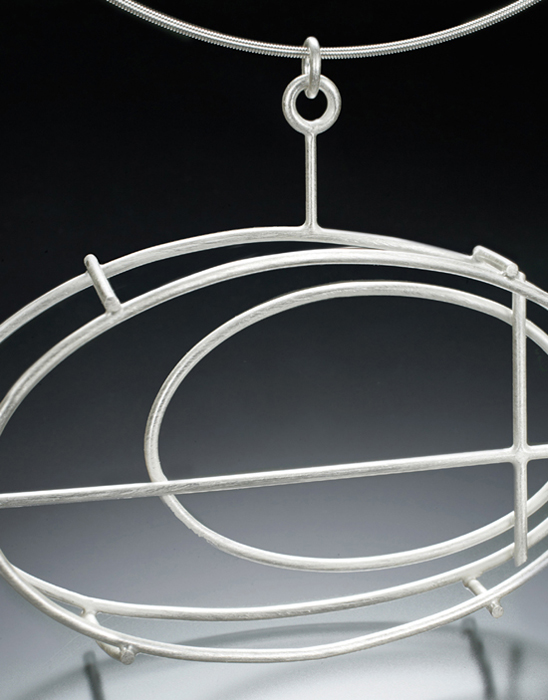
OVAL NECKLACE BY DONNA D'AQUINO, sterling silver. PHOTO BY RALPH GABRINER
To my ever-supportive and patient husband, who over the years has played several roles in my jewelry career: studio assistant, roadie, graphic designer, photographer, and Eagle Scout, to name a few. I could not have done this without you. Thank you for your deep understanding, friendship, and love.
Thanks to all my beloved friends and family for their support and help. Thank you, Mom, for your beautiful illustrations. I see your hand in each drawing, which makes this book a very special collaboration. Thank you to my editor, Joy Aquilino, who had unwavering faith in and encouragement for this first-time author. Thank you to my fabulous contributing artists, whose jewelry elevates this book to a higher level. Its an honor to include your work, which is an inspiration to me and to newcomers to our craft.
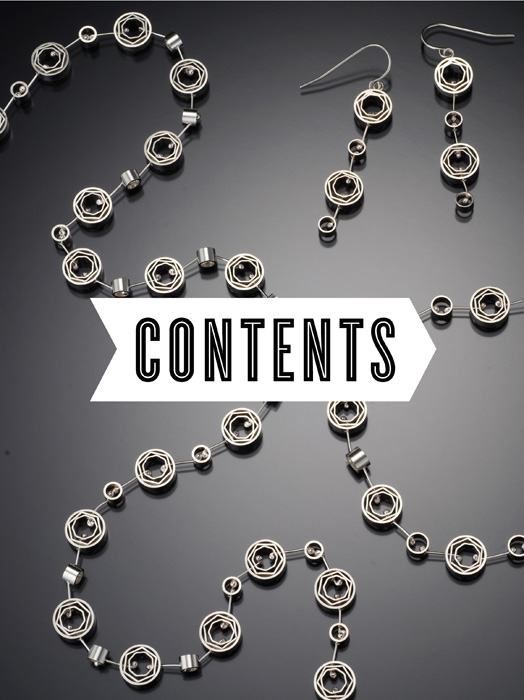
PREFACE
Working with metal is a pleasure. Its versatility and malleability allow for endless creative possibilities. I began working with sterling silver and gold a decade ago, and my love of metalworking only continues to grow. The process of making metal jewelrytactile, symbolic, decorative, and primalfulfills many physical and emotional needs for me. Theres something very satisfying about heating metal with fire and working it into a beautiful form.
I conceived of Hot Connections Jewelry as an easy-to-follow resource for people who have experience making jewelry with beading, wirework, or cold-connection techniques and want to expand their skills to include soldering in their creative repertoires. This book is unique in that it provides a wide-ranging yet detailed survey of a variety of techniques that use a torch and solder. I offer guidance about setting up a workspace, buying a torch, and choosing and using some essential tools. In addition to soldering, I cover basic fabrication techniques, such as sawing, filing, and riveting, as well as more advanced techniques like creating surface textures, setting stones, and using inlay. Hot Connections Jewelry also includes twenty-three lessons and fifteen projects, each of which builds upon skills taught previously by incorporating a new technique. The projects can be copied exactly or used as inspiration to create unique designs. Each chapter is supplemented with photographs of my own jewelry as well as that of other jewelers, so you can see the range of creative outcomes that are possible with these techniques. This blend of reference and inspiration is designed to answer the many questions asked by jewelry makers who are new to solderingquestions I had when I was a beginner. There are, of course, many different aspects and tangents within every technique and too many variations to include in one book. I encourage you to further pursue any technique that interests you and experiment; its the best way to learn about the tools and materials.
Before you begin soldering, Id like to offer some advice: First, theres no one correct way to make jewelry, only techniques that provide direction and encourage experimentation with tools and materials. If youre new to soldering, I encourage you to try the projects, use different materials, and explore the possibilities. The saying Learn from your mistakes definitely applies here; every experience is valuable, and some of the best ideas come about through happy accident. Second, remember that a good design is nothing if the quality is shoddy: You not only want to enjoy making your creations but to be proud of them, too. For many jewelers, its the process as well as the end product that make metalwork so meaningful. Have fun, and good luck!
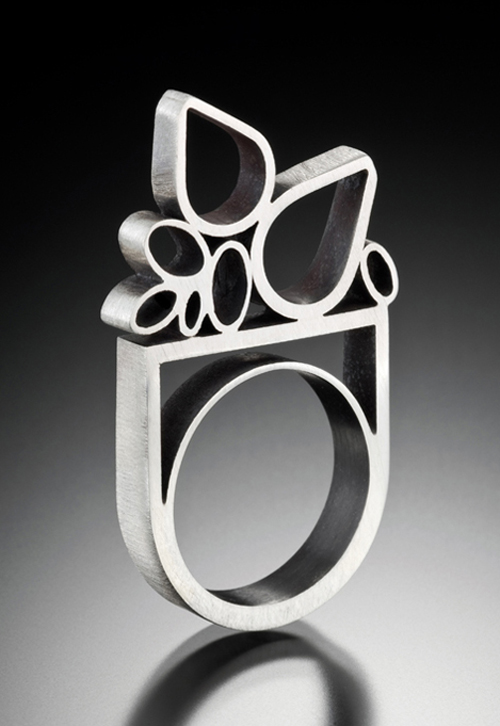
AVOCADO RING BY HILARY HACHEY, sterling silver. PHOTO BY HAP SAKWA
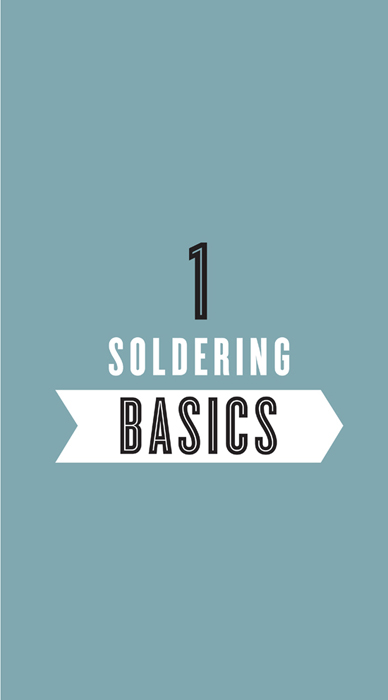
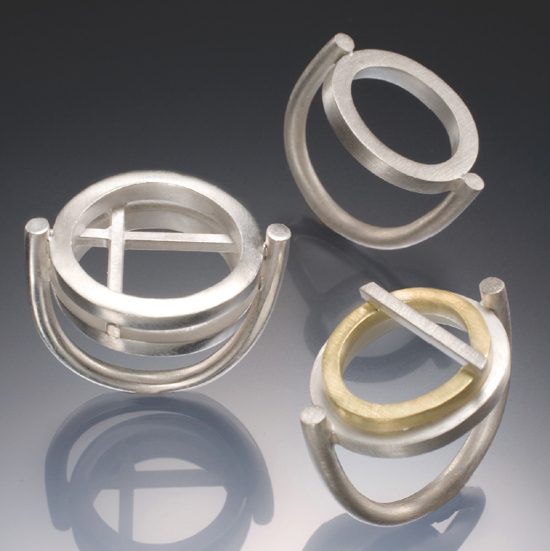
RINGS BY DONNA D'AQUINO, sterling silver and 18K gold. PHOTO BY RALPH GABRINER
HOW SOLDERING WORKS
Although its possible to create jewelry from separate units, such as beads and wire, being able to permanently joinor soldermetal components can greatly further your creativity, versatility, and confidence in jewelry making. Soldering calls for a combination of scientific understanding and perception; at the same time, its a simple process of heating, timing, and observation. It is a skill anyone can master with practice.
While successful soldering is best learned through experience, some basic knowledge of its physics is helpful. Soldering (more correctly called


